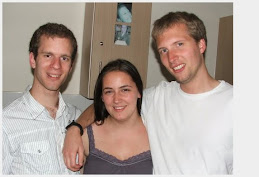Tuesday, 21 April 2009
New concept: Hamlington Underground Racing Association (H.U.R.A.)
Concept:
Saturday, 4 April 2009
Wii Remotes
Well, the concept has somewhat changed but I'll let my colleagues fill you in on those details. I'm far too excited about the cube we have moving around. Using DarwiinRemote1 we have the Wii remotes, complete with nunchucks and classic controllers, synced up to the Mac. It takes a while for the software to detect the Wii remotes but once connected they perform very well and we get nice pretty graphs of the motion.

From here and with the discovery of the Unity plugin, UniWii2, it was possible to use the data from the Wii input devices directly in the game's scripts. The whole set-up process, as with everything in Unity so far, was very straightforward. I particularly like the way it structures everything required by a project in a well-organised folder hierarchy as this is how I like to work.
Starting with a basic controller script I mapped the motion data from a Wiimote to a cube and watched it move as I moved the controller. This was quite satisfying in itself but I then went on to create a simple vehicle controller and had a very simple car driving around.

From here and with the discovery of the Unity plugin, UniWii2, it was possible to use the data from the Wii input devices directly in the game's scripts. The whole set-up process, as with everything in Unity so far, was very straightforward. I particularly like the way it structures everything required by a project in a well-organised folder hierarchy as this is how I like to work.
Starting with a basic controller script I mapped the motion data from a Wiimote to a cube and watched it move as I moved the controller. This was quite satisfying in itself but I then went on to create a simple vehicle controller and had a very simple car driving around.
- http://sourceforge.net/projects/darwiin-remote/
- http://www.unifycommunity.com/wiki/index.php?title=UniWii
Subscribe to:
Comments (Atom)
